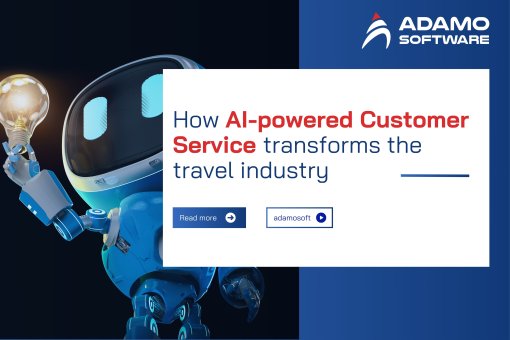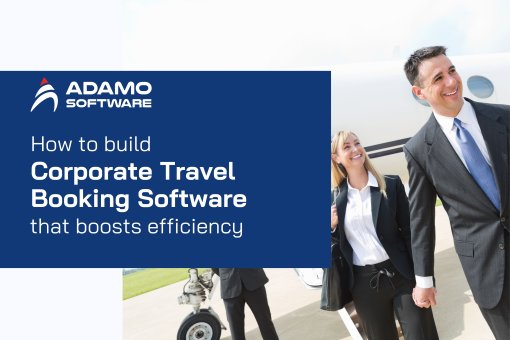Air Ticketing Software: How it works, benefits and pricing insights
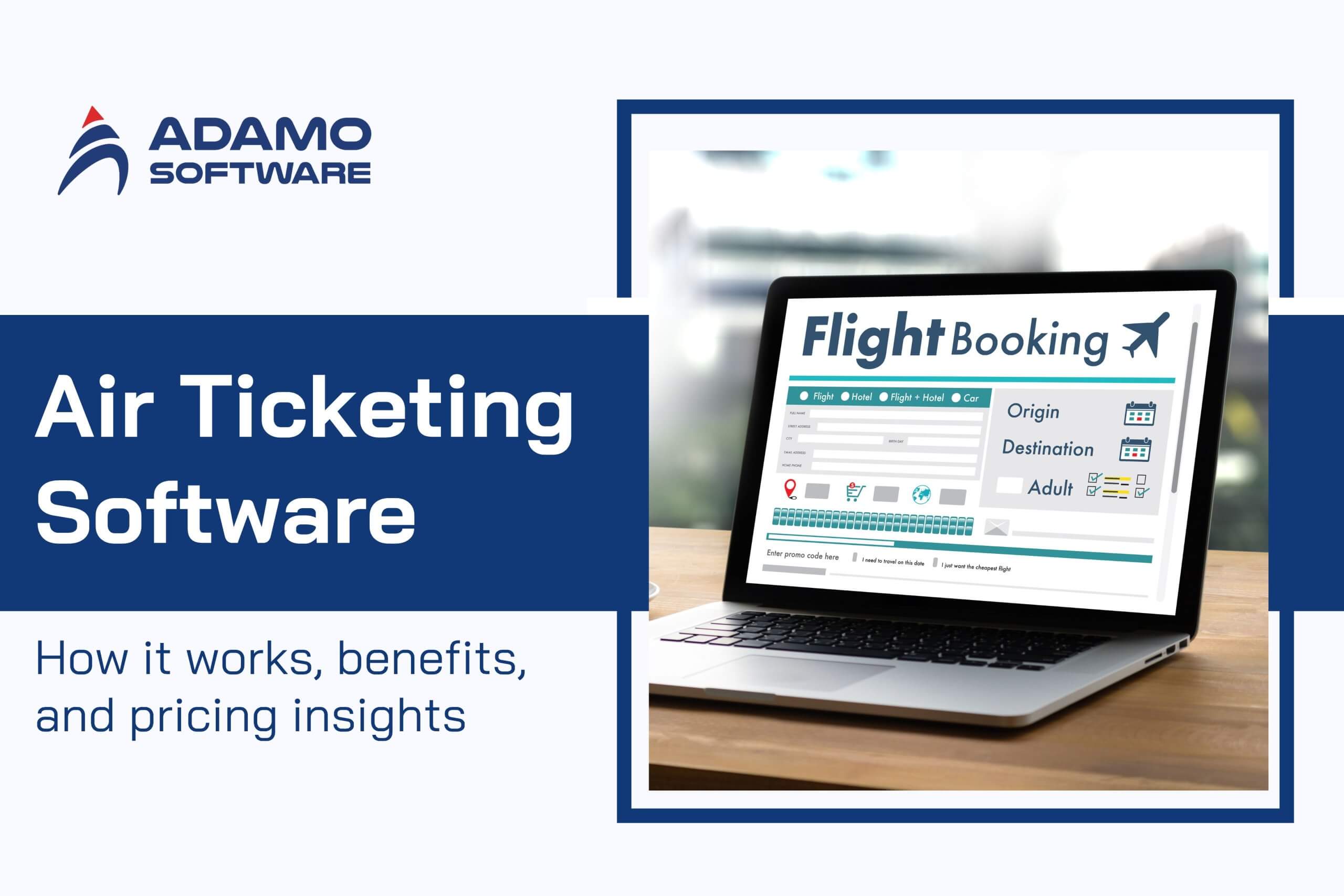
Optimize your travel business with air ticketing software – streamline operations, reduce costs, and enhance customer experience with our tailored solutions.
Nowadays, booking airline tickets does not require going to the ticket office or calling the hotline anymore – just a few clicks on the phone and you’re done. Behind that convenience is the online airline ticket booking software – air ticketing software – a tool that is being applied by most travel companies and airlines to save time, reduce manual operations and bring better experiences to customers.
Statistics from Statista show that by 2025, up to 74% of airline ticket bookings worldwide will be made online – a number that is enough to show how important this software is in the modern tourism industry. In this article, we will learn what air ticketing software is, how it works, and why it has become a “powerful assistant” for both businesses and customers.
I. What is Air Ticketing Software?
Air ticketing software is a technology solution that allows users to book and buy airline tickets quickly, conveniently, and completely online. Instead of waiting in line at the ticket counter like before, users can now book tickets right at home with just a few clicks.
Online air ticket booking software is popular in the aviation industry and widely applied to trains, buses, and other means of transportation. This software helps to reduce manual steps, save operating costs, and bring optimal experiences to users.
Thanks to air ticketing software, travel companies can significantly reduce the time and effort spent on manual tasks such as processing ticket bookings and issuing invoices or payments. Travelers no longer must go to the place to book tickets like before. With just an Internet connection, users can easily look up flights, choose suitable seats, and complete ticket bookings right at home – quickly and conveniently. The online booking engine has taken a leading share worldwide, and people are getting more and more privileges.
Ready to Outsource?
Discover how we can transform your business with expert IT solutions.
II. How does air ticket booking software work?
An air ticket is an electronic document and record created by a travel agent or airline to confirm the identity of a particular passenger who has a seat on a flight. However, air ticketing software is a web-based platform that allows the collection, storage, and processing of all data related to the trip. This software will enable passengers to book tickets, check flight information in real time, and help operating units optimize their operations.
Air ticketing software operates according to a systemized process. There are three main steps in the ticket booking process, but each includes many smaller stages. Below are the three most important steps in the system:
The flight search process can be done in three steps, such as the airline website, OTA, and Meta search engine, which can complete the flight search.
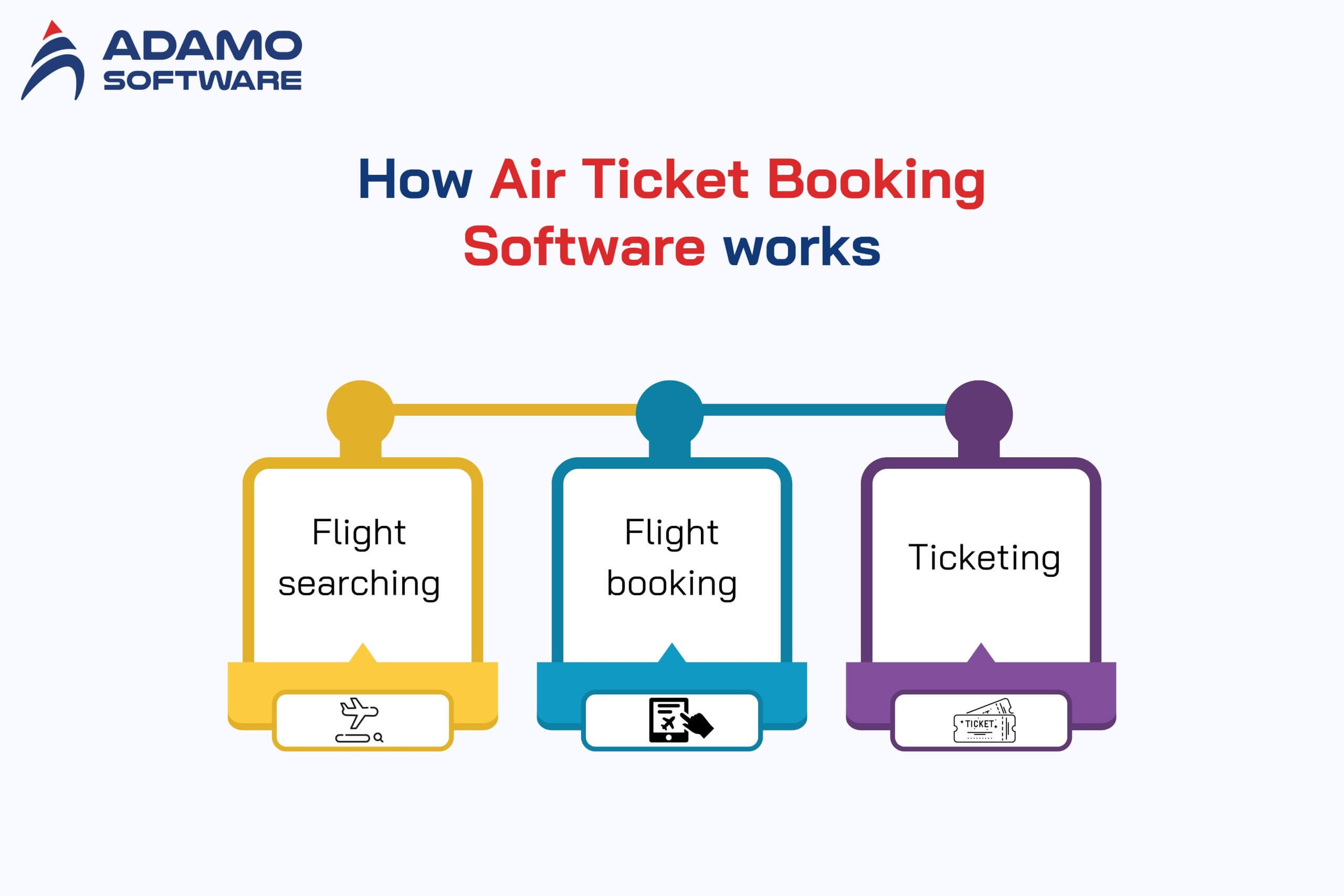
1. Flight Searching
Airline website: This is the first search step whenever a traveler visits a website and searches for a flight. When they start to access and search for a trip, the query will be sent directly to the Central Reservation System (CRS) without going through any intermediary. The CRS will then respond with available flight options for the requested date. However, note that with this method, the user will only receive results from a specific airline, so the choice will often be limited.
Online Travel Agency (OTA): Airline tickets can be booked through many different forms. Users can book directly, but they will get more support if they use OTA. OTAs get flight data from Global Distribution Systems (GDS) and sometimes from airline consolidators. Most online travel companies today operate on booking engine technology.
Meta Search Engine: This is the most popular information retrieval tool today. It allows data to be aggregated from multiple sources to return results that match the user’s needs. In particular, it works based on user queries, automatically searching for information and returning the closest results. Most meta search engines have built-in direct booking features.
2. Flight booking
Passengers can book tickets through the online booking management system. When accessing the airline or OTA website, users must provide necessary information such as personal information, price, seat class, destination, departure airport, and other additional requirements. After the passenger selects a specific flight, the retailer will become the airline’s website. The system will continue to connect with the CRS to see if that flight is still available at the previous price.
Once all information is valid, the system will generate a unique booking reference. After successfully booking a ticket, the passenger will receive a confirmation code via email. This code allows tracking the flight status, changing the schedule, and canceling or refunding the ticket if necessary. In other words, this booking code is the “key” that helps users manage their entire journey.
3. Ticketing
A PNR (Passenger Name Record) code is insufficient to complete the ticketing process. In fact, the ticketing system is a management tool that helps process requests from passengers. Both airlines and OTAs currently use third-party services to ensure data security and secure electronic transaction processing.
Normally, after passengers provide complete information and payment for the ticket booking fee, the airline’s system will update the ticket price information in the PNR file. At this time, passengers will receive an electronic ticket (e-ticket) via email – an important document to verify their right to board the plane. Passengers can download the ticket to their phone or print it out when checking in.
III. Significant benefits of air ticketing software
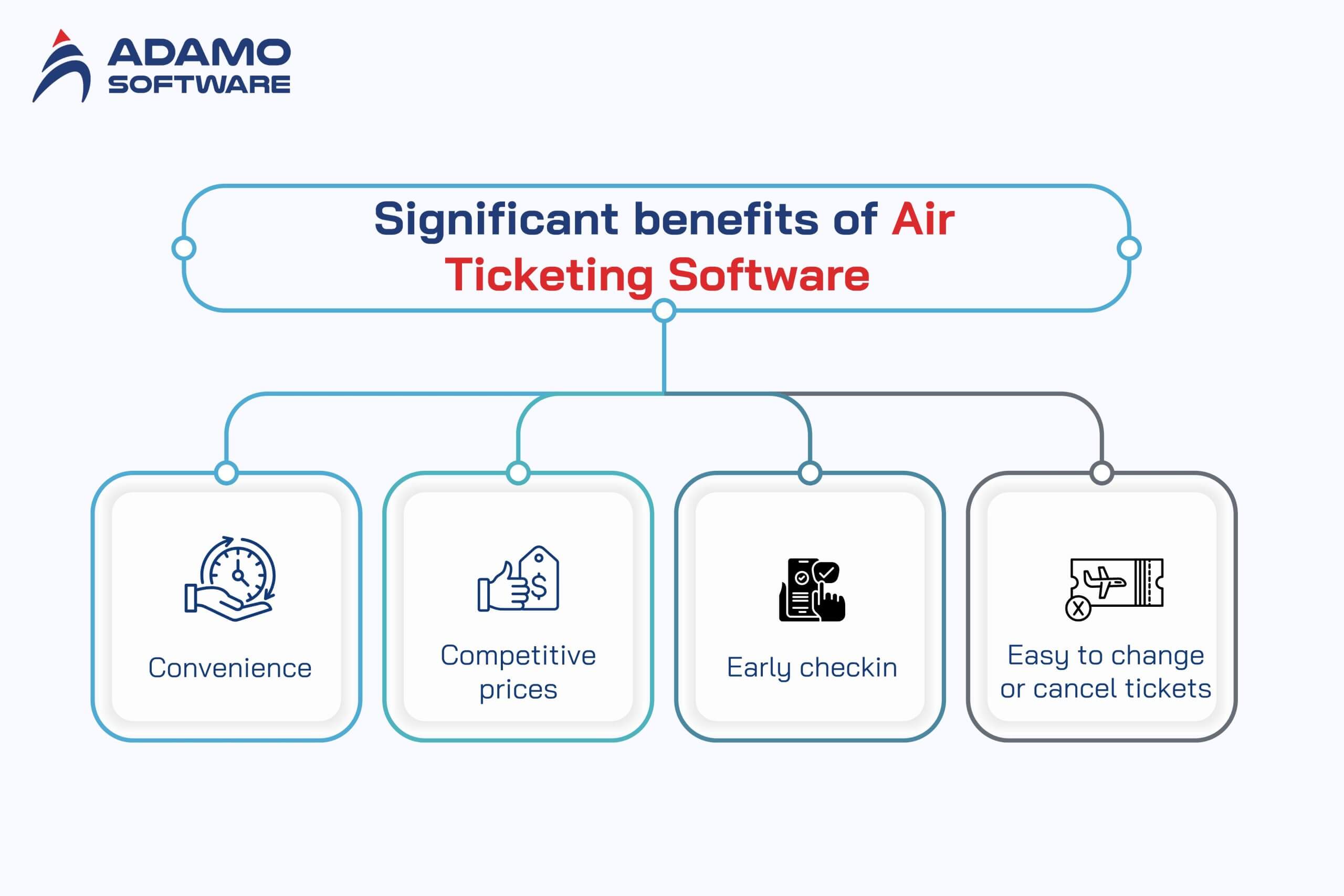
1. Convenience
Booking air tickets online means that travelers can do it anytime, anywhere, such as at home or the office. Or they can even book tickets on the go with a computer or mobile phone with an Internet connection.
With air ticketing software, users no longer have to worry about finding a parking space to go to the airline ticket agent, waiting in line, or being pressured to decide to buy tickets on the spot. Instead, they can freely compare, think, and book tickets whenever they see fit.
2. Competitive prices
When booking air tickets through air ticketing software, travelers will have the opportunity to find the best price. Unlike booking tickets through a fixed agent or calling the airline directly, users can proactively compare multiple airlines simultaneously to make the most reasonable decision.
3. Early check-in
Booking air tickets online allows passengers to check in early and save time for the trip. For domestic flights, passengers can check in as early as 24 hours and as late as 1 hour before departure. The check-in time frame for international flights ranges from 2 to 24 hours before departure.
Passengers only need to visit the airline’s website, enter their booking code and personal information, and they can print their boarding pass at home. In addition, some airlines also send barcode boarding passes directly to their phones, making travel more convenient.
4. Easy to change or cancel tickets
Another big advantage of air ticketing software is the ability to change or cancel tickets easily. Instead of having to contact by phone or go to an agent, travelers can simply log in to the airline’s website with their booking information, then change the flight date, upgrade their seat, or cancel their flight.
In addition, if they book tickets through a traditional agent, they may be charged an additional service fee. Meanwhile, some airlines allow online changes without extra fees, saving passengers money.
IV. Costs breakdown of flight ticketing software
The cost of building air ticketing software is often very diverse, depending on many factors, such as the required features, the complexity of the system, and the level of customization according to the business’s specific requirements. In addition, choosing a separate software development solution or using an available platform also significantly impacts the total cost.
1. Build software according to specific requirements (Custom Development)
The cost will be very high if you want to build air ticketing software designed to meet your needs. Developing such a product requires a professional technical team, from programmers and designers to software maintenance and updates. The investment level can range from tens to hundreds of thousands of USD, depending on the scope and complexity.
2. Third-party software solutions
Today, many businesses choose third-party air ticketing software solutions to reduce costs and shorten implementation time. These platforms often apply many different charging forms, such as monthly subscriptions, per-transaction fees, or a combination. This allows businesses to adjust their usage and expand as needed easily. However, the cost between providers is quite diverse, so it is important to carefully evaluate the features and charging methods to ensure they suit the company’s needs and budget.
3. Software licensing fees
Some air ticketing software may require licensing fees. These fees can be one-time or annual, depending on the terms of the agreement. In addition, licensing fees often come with technical support and software updates, so your business needs to consider carefully when choosing.
4. System integration and customization
If businesses want their online booking software to work smoothly with other management systems such as CRM, payment gateways, or flight coordination software, they will need to invest more in integration and customization. The cost will depend on the complexity and scope of the connection, but this helps the system operate synchronously, improving overall efficiency and providing a seamless experience for users.
5. Maintenance and technical support
All software needs to be maintained continuously to ensure stable and safe operation. Maintenance and technical support costs are important in updating the software according to the latest standards. As a result, businesses can maintain service quality and improve customer satisfaction in the long term.
V. Air ticketing system software: Work with Adamo Software for the solution

At Adamo Software, we create flight booking solutions tailored to your business. We make sure our software fits smoothly with the tools you already use, making your operations simpler and your customers happier.
Our team is here to build easy-to-use travel software that saves you time and cuts costs, so you can focus on growing your business with confidence. Reach out to us for a solution that works well today and scales with you tomorrow.
FAQs
1. How does an online flight booking system work?
Air ticketing software is software that runs on the web or mobile application, helping passengers easily search and book tickets at home. This system connects to Global Distribution Systems (GDS) to get real-time flight data, including schedules, available seats, and ticket prices. Thanks to that, users can compare and choose flights from many airlines quickly and conveniently.
2. What benefits does an airline booking system bring to tourism businesses?
This is an indispensable tool in the tourism technology industry, helping businesses automate the ticket booking process, update accurate flight information instantly, improve operational efficiency, and create a competitive advantage in the market.
3. How does airline booking software integrate with Global Distribution Systems (GDS) to provide real-time data to customers?
The air ticketing software connects to popular GDS systems such as Amadeus, Sabre, or Travelport. These platforms aggregate data from many airlines and standardize information for easy retrieval by the software. When users search, the software will send a request to the GDS database for accurate information about flight schedules, available seats, and ticket prices. This data is then displayed on a friendly interface, making it easy for customers to search, compare, and book tickets on the software.
This integration helps businesses diversify their flight options and ensures that the data is always updated and accurate, bringing a reliable experience to users.







